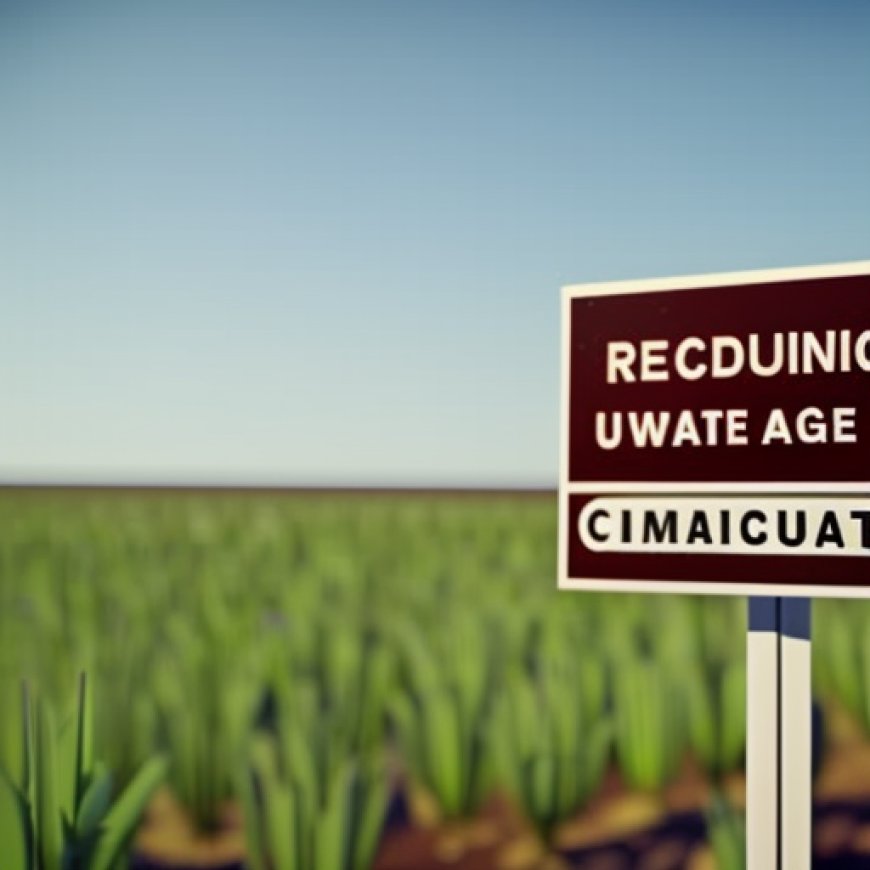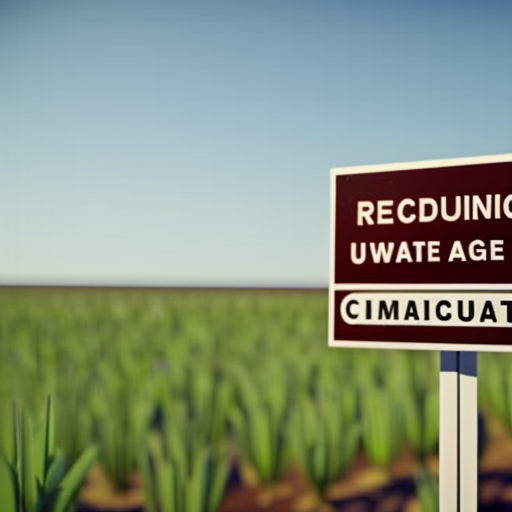Reducing water usage is important to replenishing the High Plains Aquifer
Reducing water usage is important to replenishing the High Plains Aquifer AgUpdate


The Importance of the High Plains Aquifer for Sustainable Development
Introduction
Throughout the Midwest, the future of the High Plains Aquifer, also known as the Ogallala Aquifer, is a topic of great importance. Water is a popular subject of conversation among both rural and urban residents in the region.
The Largest Freshwater Aquifer in the World
The Ogallala Aquifer, which underlies eight states including much of Kansas, is the largest freshwater aquifer in the world. Most of the water supply for western Kansas relies on this aquifer. However, it is a finite resource that is being used faster than it can be recharged.
Sustainable Development Goals (SDGs)
- Goal 6: Clean Water and Sanitation
- Goal 11: Sustainable Cities and Communities
- Goal 12: Responsible Consumption and Production
- Goal 13: Climate Action
- Goal 15: Life on Land
The Future of the Aquifer
Conversations about the future of the aquifer often focus on changing individual actions because, as soon as 40 years from now, the aquifer could be 70% depleted. Additionally, 40% of Kansas farm acres that depend on irrigation may no longer have sufficient supplies to sustain the current pumping rate.
Measuring and Monitoring
The Kansas Geological Survey measures about 1,400 wells in the aquifer each January to understand its baseline. In 2022, Kansas experienced one of the driest years on record, resulting in a longer pumping season and a lack of water level recovery. Water recharge levels vary across different regions of Kansas.
Data and Research
Kansas is considered “data rich” compared to neighboring states due to its annual well measurements and continued research focused on the aquifer. Measuring water use is critical in understanding the aquifer and finding solutions to its challenges.
Reducing Water Use
The solution to the water issue in Kansas lies in reducing overall water use. Water conservation areas, local enhanced management areas, and research have helped farmers reduce their water use while maintaining productivity. Technological advancements, such as center pivot irrigation and more efficient drop nozzles, have also contributed to water conservation efforts.
Relationship between Water Usage and Aquifer Levels
Researchers can identify the relationships between water usage and aquifer levels, providing valuable information for determining localized budgets. The aquifer has shown consistent recovery patterns at the end of each pumping season.
Support and Resources
The Kansas Department of Agriculture Division of Water Resources and the Kansas Water Institute offer additional resources for farmers and residents to learn more about the aquifer and make necessary changes for a sustainable future.
Conclusion
The High Plains Aquifer plays a crucial role in achieving several Sustainable Development Goals, including clean water and sanitation, sustainable cities and communities, responsible consumption and production, climate action, and life on land. By reducing water use and implementing sustainable practices, farmers can continue to feed the world while preserving this finite resource.
SDGs, Targets, and Indicators
-
SDGs addressed or connected to the issues highlighted in the article:
- SDG 6: Clean Water and Sanitation
- SDG 13: Climate Action
- SDG 15: Life on Land
-
Specific targets under those SDGs based on the article’s content:
- SDG 6.4: By 2030, substantially increase water-use efficiency across all sectors and ensure sustainable withdrawals and supply of freshwater to address water scarcity and substantially reduce the number of people suffering from water scarcity.
- SDG 13.1: Strengthen resilience and adaptive capacity to climate-related hazards and natural disasters in all countries.
- SDG 15.1: By 2020, ensure the conservation, restoration, and sustainable use of terrestrial and inland freshwater ecosystems and their services, in particular forests, wetlands, mountains, and drylands, in line with obligations under international agreements.
-
Indicators mentioned or implied in the article:
- Water recharge levels in different regions of Kansas
- Water levels in the Ogallala Aquifer
- Water use measurements through well monitoring
- Water-use efficiency in agriculture
- Resilience and adaptive capacity to climate-related hazards
- Conservation, restoration, and sustainable use of terrestrial and inland freshwater ecosystems
Table: SDGs, Targets, and Indicators
| SDGs | Targets | Indicators |
|---|---|---|
| SDG 6: Clean Water and Sanitation | SDG 6.4: By 2030, substantially increase water-use efficiency across all sectors and ensure sustainable withdrawals and supply of freshwater to address water scarcity and substantially reduce the number of people suffering from water scarcity. | – Water recharge levels in different regions of Kansas – Water levels in the Ogallala Aquifer – Water use measurements through well monitoring |
| SDG 13: Climate Action | SDG 13.1: Strengthen resilience and adaptive capacity to climate-related hazards and natural disasters in all countries. | – Resilience and adaptive capacity to climate-related hazards |
| SDG 15: Life on Land | SDG 15.1: By 2020, ensure the conservation, restoration, and sustainable use of terrestrial and inland freshwater ecosystems and their services, in particular forests, wetlands, mountains, and drylands, in line with obligations under international agreements. | – Conservation, restoration, and sustainable use of terrestrial and inland freshwater ecosystems |
Behold! This splendid article springs forth from the wellspring of knowledge, shaped by a wondrous proprietary AI technology that delved into a vast ocean of data, illuminating the path towards the Sustainable Development Goals. Remember that all rights are reserved by SDG Investors LLC, empowering us to champion progress together.
Source: agupdate.com

Join us, as fellow seekers of change, on a transformative journey at https://sdgtalks.ai/welcome, where you can become a member and actively contribute to shaping a brighter future.







